Waterfalls are some of nature’s most captivating displays, with their powerful cascades and breathtaking heights. The world is full of these majestic wonders, and each one offers a unique spectacle, whether it’s their height, width, or the natural landscape surrounding them. In this article, we’ll explore some of the largest waterfalls in the world, focusing on their height, number of drops, and other fascinating details that make them stand out. We also added two that span a large area. Now, let’s take a closer look at these incredible forces of nature.
Khone Phapheng Falls
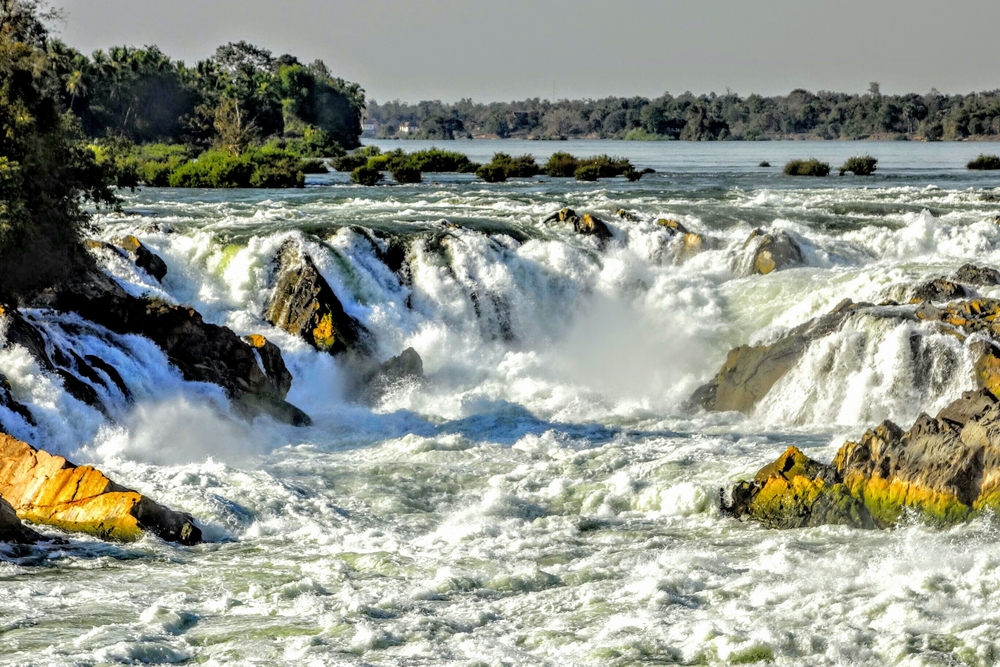
Khone Phapheng Falls, located on the Mekong River in Laos, is the widest waterfall in the world, with a remarkable width of 35,376 feet (10,783 meters). Although it is relatively short, with the tallest drop reaching just 69 feet (21 meters), its grandeur lies in the sheer expanse of water. They are formed where the Mekong River divides into hundreds of channels, creating a chaotic array of rapids and cascades. During the rainy season, the water volume increases dramatically, making the falls thunderous and mesmerizing. The area around the falls is rich in biodiversity, including the rare Irrawaddy dolphin, which can sometimes be spotted in the nearby waters. It also plays a crucial role in the region’s ecology and tourism. They are a significant obstacle for river navigation, effectively splitting the Mekong into upper and lower sections, limiting boat travel past the falls.
Cataratas del Iguazú
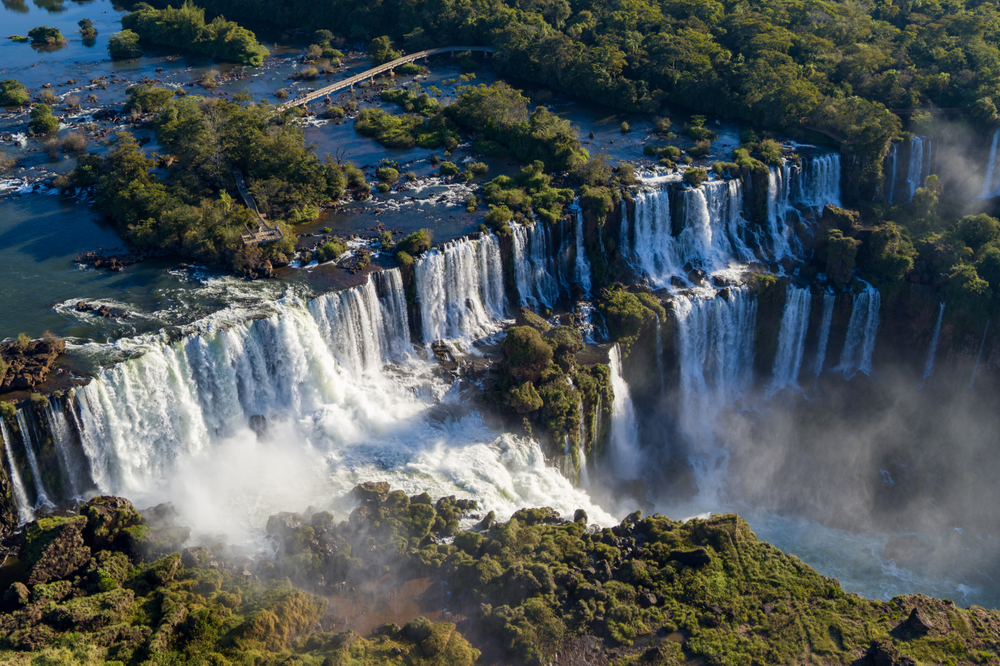
The Iguazú Falls, on the border between Argentina and Brazil, is one of the most impressive waterfall systems in the world. It spans over 8,800 feet (2,682 meters) wide and reaches a maximum height of 269 feet (82 meters). The system is composed of 275 distinct falls, with the Devil’s Throat being the most famous and powerful, where the river plummets over a massive U-shaped cliff. The Iguazú River creates a dramatic and vast waterfall that can be heard and seen from miles away, especially during the rainy season. The surrounding Iguazú National Park is a lush subtropical rainforest, filled with rich biodiversity, making it a destination for nature lovers and adventure seekers alike. The park offers extensive viewing platforms and trails that allow visitors to experience the falls from multiple angles. The thundering roar of the water as it plunges into the river below is a memorable and breathtaking experience for all who visit.
Yosemite Falls
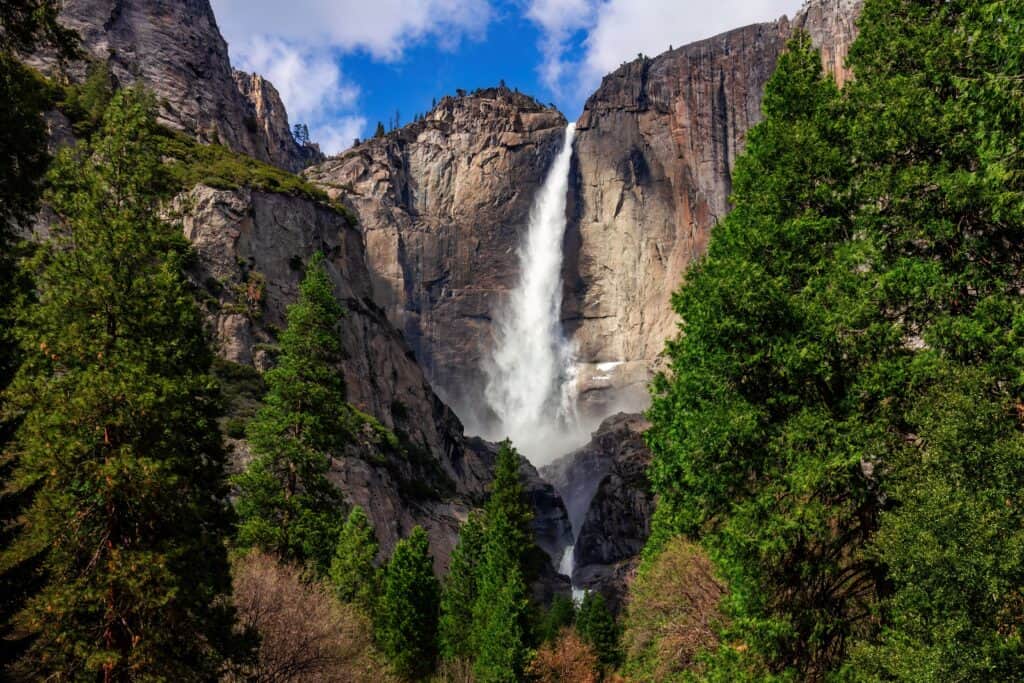
Yosemite Falls, located in California’s Yosemite National Park, is the tallest waterfall in North America, with a total height of 2,425 feet (739 meters). It is composed of three sections: the Upper Falls, which plunges 1,430 feet (440 meters), the Middle Cascades, and the Lower Falls, which drops another 320 feet (98 meters). It is a seasonal waterfall, with its peak flow occurring in late spring when snowmelt from the Sierra Nevada mountains feeds its water supply. During summer and fall, the flow diminishes significantly, and the falls can even dry up completely during dry years. The surrounding granite cliffs and forested landscape make it a popular attraction for hikers and photographers. It can be viewed from various vantage points throughout the park, offering visitors stunning perspectives of this natural wonder.
Browne Falls
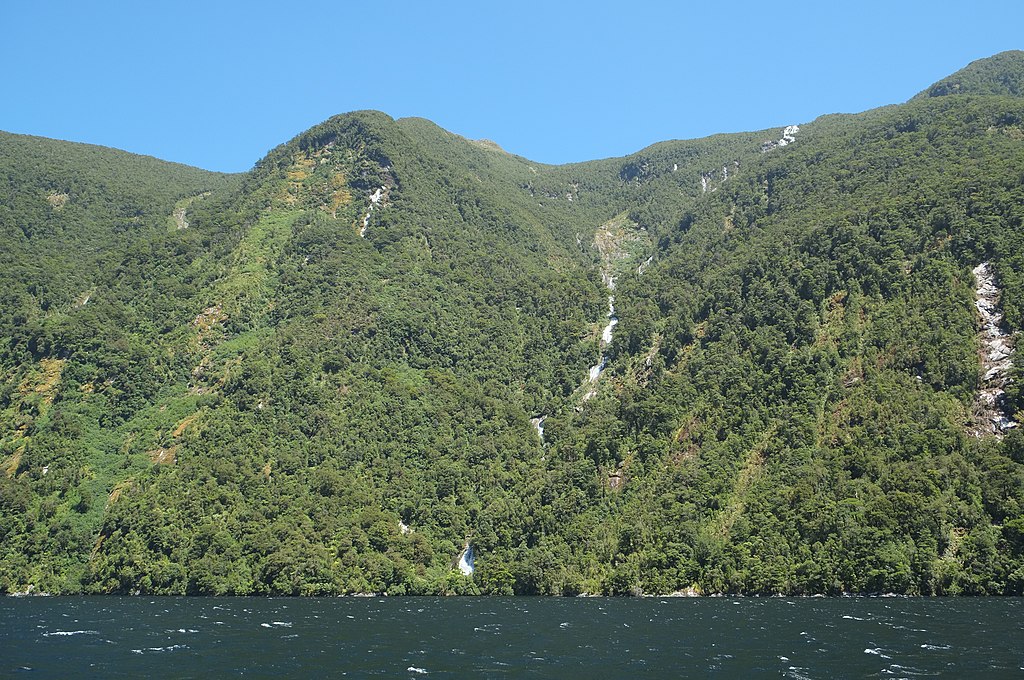
Browne Falls, located in Fiordland National Park in New Zealand, is one of the tallest waterfalls in the country, with a height of 2,744 feet (836 meters). It originates from Lake Browne, a small body of water that spills over the edge of a cliff, creating a stunning cascade that flows into Doubtful Sound. It is named after Victor Carlyle Browne, who discovered it during an aerial survey in the 1940s. It is a tiered waterfall, meaning it descends in multiple stages, each creating a new visual marvel. The surrounding area is part of New Zealand’s rugged and pristine wilderness, known for its steep mountains, dense forests, and dramatic fjords. Access to it is limited due to its remote location, and it is best viewed from a boat or plane. The stunning landscape and its towering height make it a hidden treasure in one of the world’s most beautiful natural settings.
James Bruce Falls
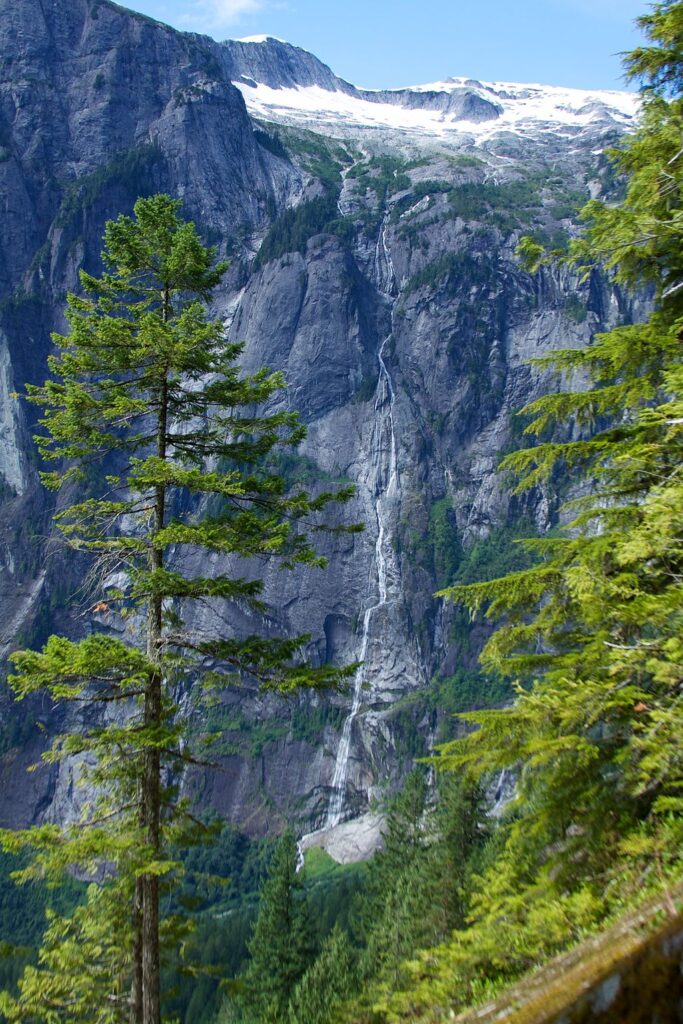
James Bruce Falls, located in British Columbia, Canada, is the tallest waterfall in North America, with a height of 2,755 feet (840 meters). It is situated within Princess Louisa Marine Provincial Park and is a seasonal waterfall fed by snowmelt from the surrounding mountains. They are part of a picturesque landscape of granite cliffs, dense forests, and the serene waters of Princess Louisa Inlet. It plunges down the steep cliffs in multiple thin streams, which can be seen best in the spring and early summer when the snowmelt is at its peak. The surrounding park is only accessible by boat or seaplane, adding to the remote and untouched feeling of the area. While the volume of water can fluctuate, its sheer height makes it a captivating natural feature.
Vinnufossen
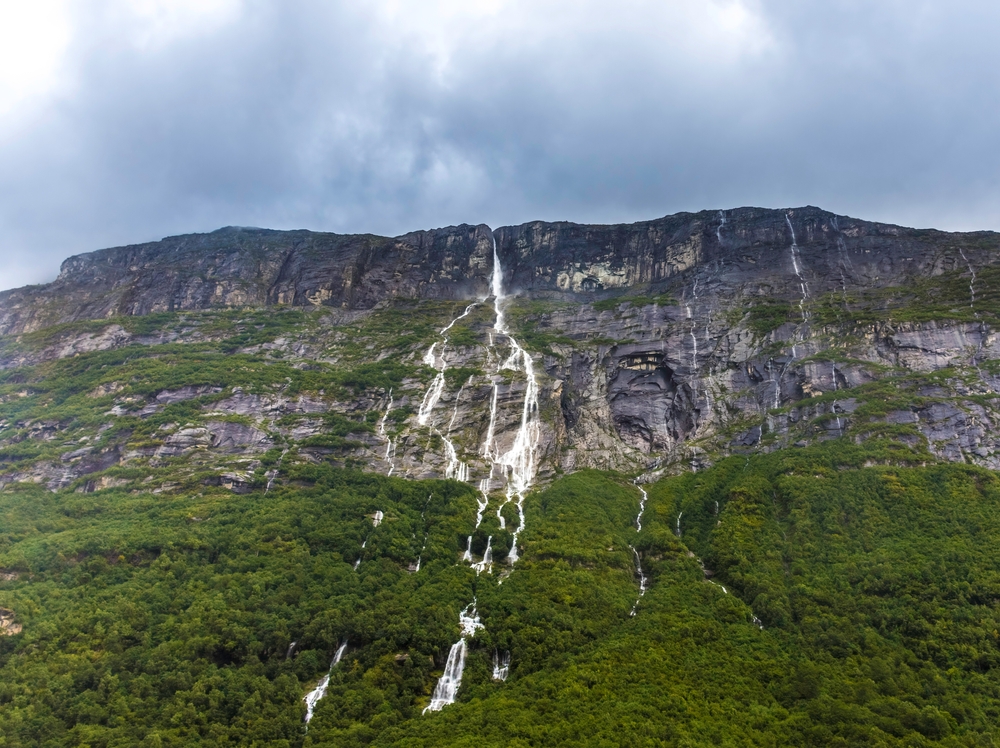
Vinnufossen, located near the village of Sunndalsøra in Norway, is the tallest waterfall in Europe, with a total height of 2,822 feet (860 meters). It is fed by the Vinnufonna glacier, which melts during the warmer months, creating a seasonal flow that runs down the steep cliffs of the Vinnu Mountain. It consists of several cascades, each forming a part of its towering descent, with the water carving out a visible path down the rocky mountainside. It is one of many in the Sunndalen Valley, but its immense height and the surrounding natural beauty make it the most spectacular. During the spring and summer months, it is at its fullest, while in winter, the flow diminishes significantly. The combination of the glacier, the towering cliffs, and the sheer height of the waterfall creates an unforgettable sight.
Yumbilla Falls
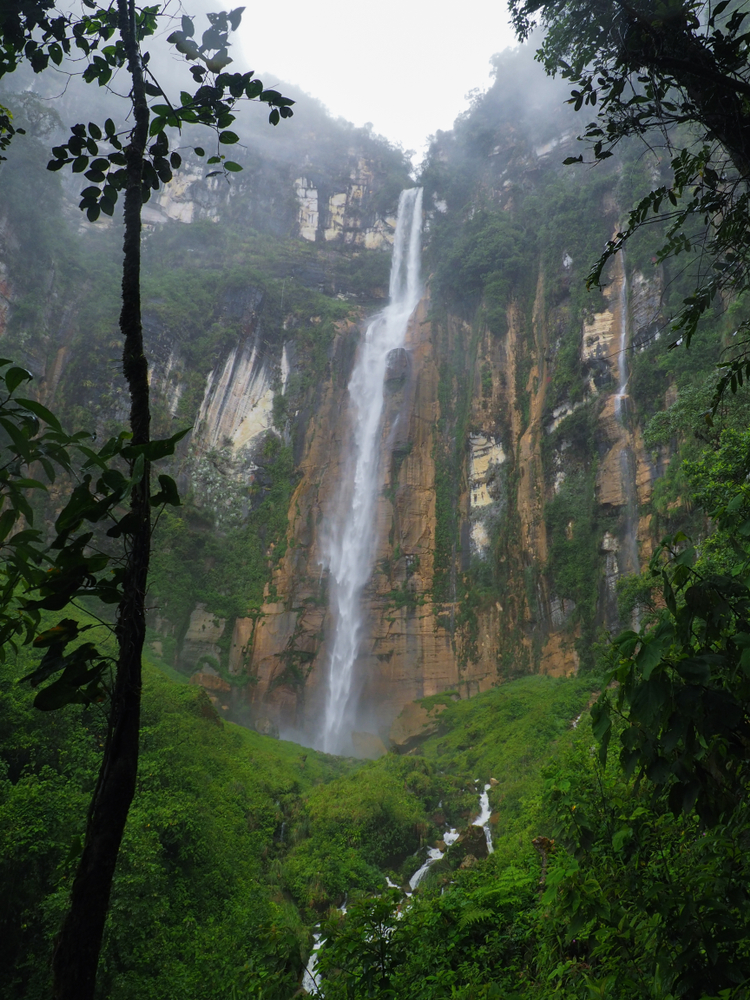
Yumbilla Falls, located in the Amazonas region of northern Peru, is the fifth-tallest waterfall globally, standing at 2,938 feet (896 meters). It consists of four distinct tiers that cascade down the lush cliffs of the rainforest. It is overshadowed by its nearby counterpart, Gocta Falls, which is more famous, but Yumbilla is actually taller. The remote location means fewer tourists, providing an unspoiled and serene experience for those who venture to see it. The surrounding area is rich with biodiversity, including orchids, birds, and other wildlife, making the hike to the falls just as captivating as the falls themselves. Although it does not carry as much water as other large falls, its impressive height and the scenic setting make it a hidden treasure in Peru.
Olo’upena Falls
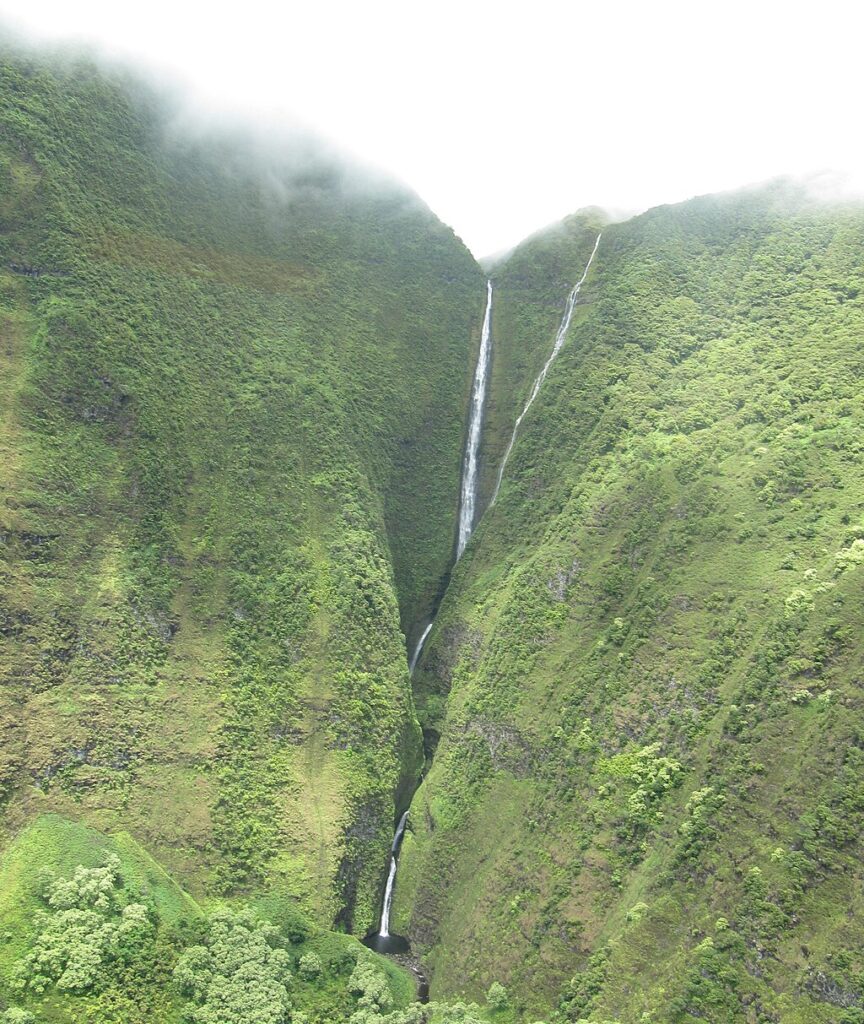
Olo’upena Falls, located on the remote island of Molokai, Hawaii, is the fourth-tallest waterfall in the world, standing at 2,953 feet (900 meters). It cascades down the steep, emerald green sea cliffs of the Haloku coastline, forming a stunning but narrow flow. Due to its secluded location, it is not easily accessible by land and can only be viewed by air or from the ocean, making it a hidden gem of natural beauty. The thin flow of water contrasts against the towering cliffs, creating a visual spectacle, especially during the rainy season when the waterfall is at its fullest. It flows seasonally, relying on rainwater that accumulates from the high cliffs above, and it creates an ethereal mist as it descends.
Tres Hermanas Falls
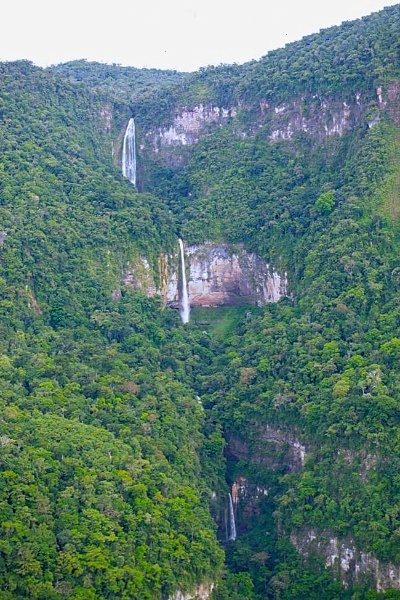
Tres Hermanas Falls, located in the Otishi National Park in Peru, is the third-highest waterfall in the world, with a height of 2,999 feet (914 meters). This stunning natural feature is named after its three distinct drops, which give the waterfall its “Three Sisters” name. It plunges into the dense, unspoiled rainforest of the Junín region, making it one of the more remote and difficult-to-access waterfalls in South America. The surrounding landscape is rich with biodiversity, including various bird species and exotic plants, adding to the allure of the falls. It is fed by the Cutivireni River, which winds through the mountainous terrain before cascading down the cliff. Its towering height and tranquil setting make it one of the most visually captivating waterfalls in Peru, though few people have the opportunity to see it up close due to its isolation.
Tugela Falls
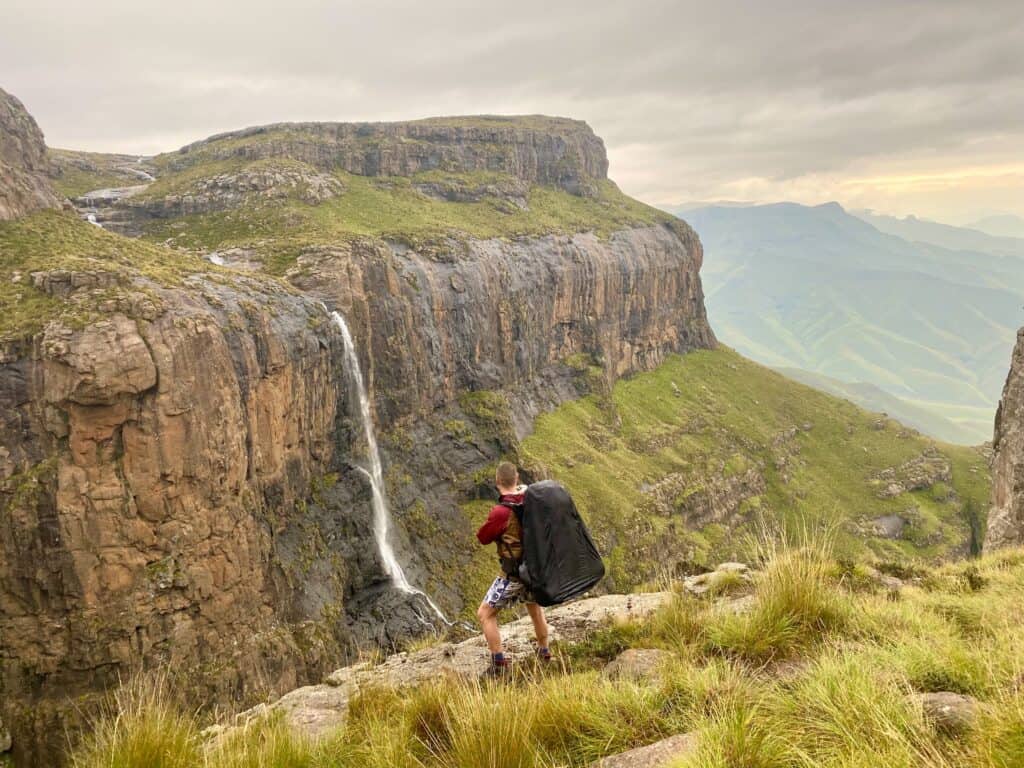
Tugela Falls, located in the Royal Natal National Park in South Africa, is the second-highest waterfall in the world, plunging a total of 3,110 feet (948 meters) down a series of five distinct drops. The longest single drop is an impressive 1,350 feet (411 meters), and the falls cascade dramatically down the Amphitheatre, a massive rock wall in the Drakensberg Mountains. It is fed by the Tugela River, which originates in the Drakensberg, and its flow is largely dependent on rainfall and snowmelt. During the winter months, the surrounding cliffs are often covered in snow, adding to the dramatic beauty of the falls. The best way to experience it is by hiking the nearby trails, which offer stunning views of the falls and the surrounding mountains.
Angel Falls
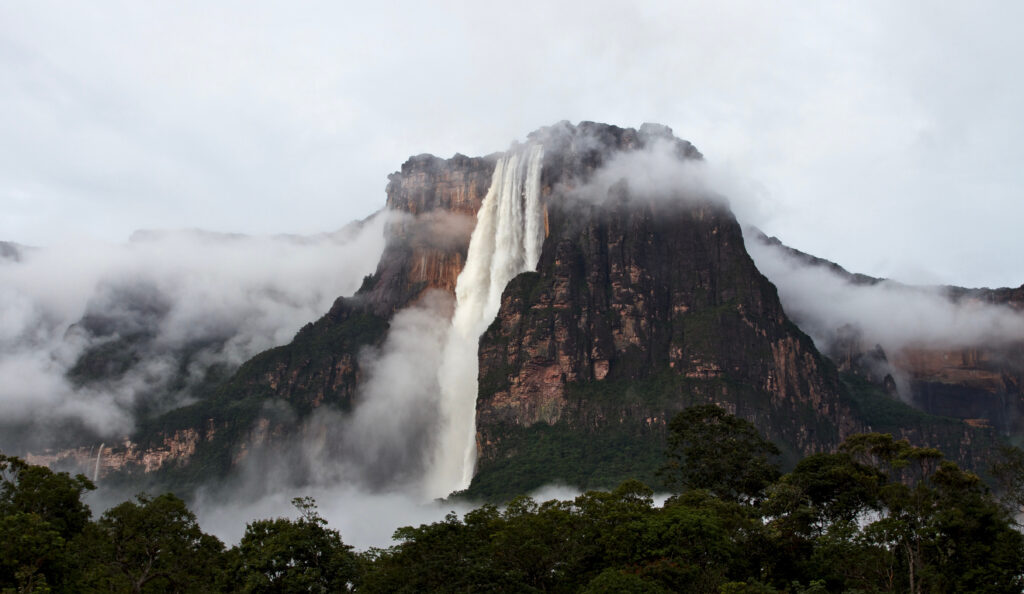
Angel Falls, located in Venezuela’s Canaima National Park, is the tallest waterfall in the world, standing at an awe-inspiring 3,212 feet (979 meters). Its uninterrupted drop of 2,648 feet (807 meters) makes it a true wonder of nature. The water comes from the Churun River, which flows over the edge of the Auyán-tepui Mountain, creating a spectacular sight as it plunges into the depths below. The falls are named after Jimmy Angel, an aviator who discovered them in 1933. Reaching it is an adventure in itself, requiring a flight to a remote airstrip and then a boat journey up the river. They are shrouded in mist for much of the year, giving them an ethereal quality that attracts adventurers from around the world. Despite its remote location, it remains one of the most iconic and breathtaking natural wonders on the planet.
This article originally appeared on Rarest.org.
More from Rarest.org
16 Most Beautiful and Endangered Coral Reefs
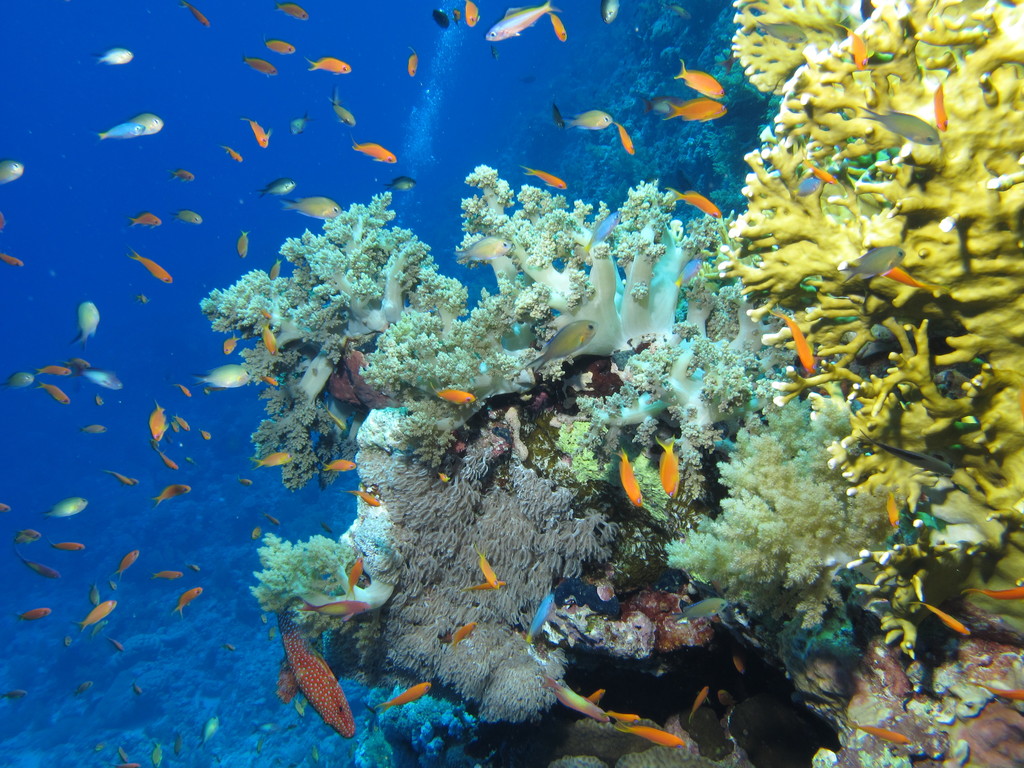
Coral reefs captivate with their stunning colors and rich biodiversity. Yet, these marine treasures face grave threats from climate change and human activities. The following reefs are not only some of the most beautiful but also among the most endangered. Read More.
13 Sought-After Antique Sewing Machines and Their Collector Value

Antique sewing machines hold a special place in history and in the hearts of collectors. These machines are more than just relics; they are a testament to craftsmanship and engineering. Collectors seek them out not only for their beauty but also for their functionality. Read More.
22 Striking Reptiles with Unusual Color Patterns

Reptiles are known for their impressive variety, and some species boast truly striking color patterns. Their coloration not only serves a purpose in camouflage or mating but also highlights the incredible diversity of the reptile world. Read More.
